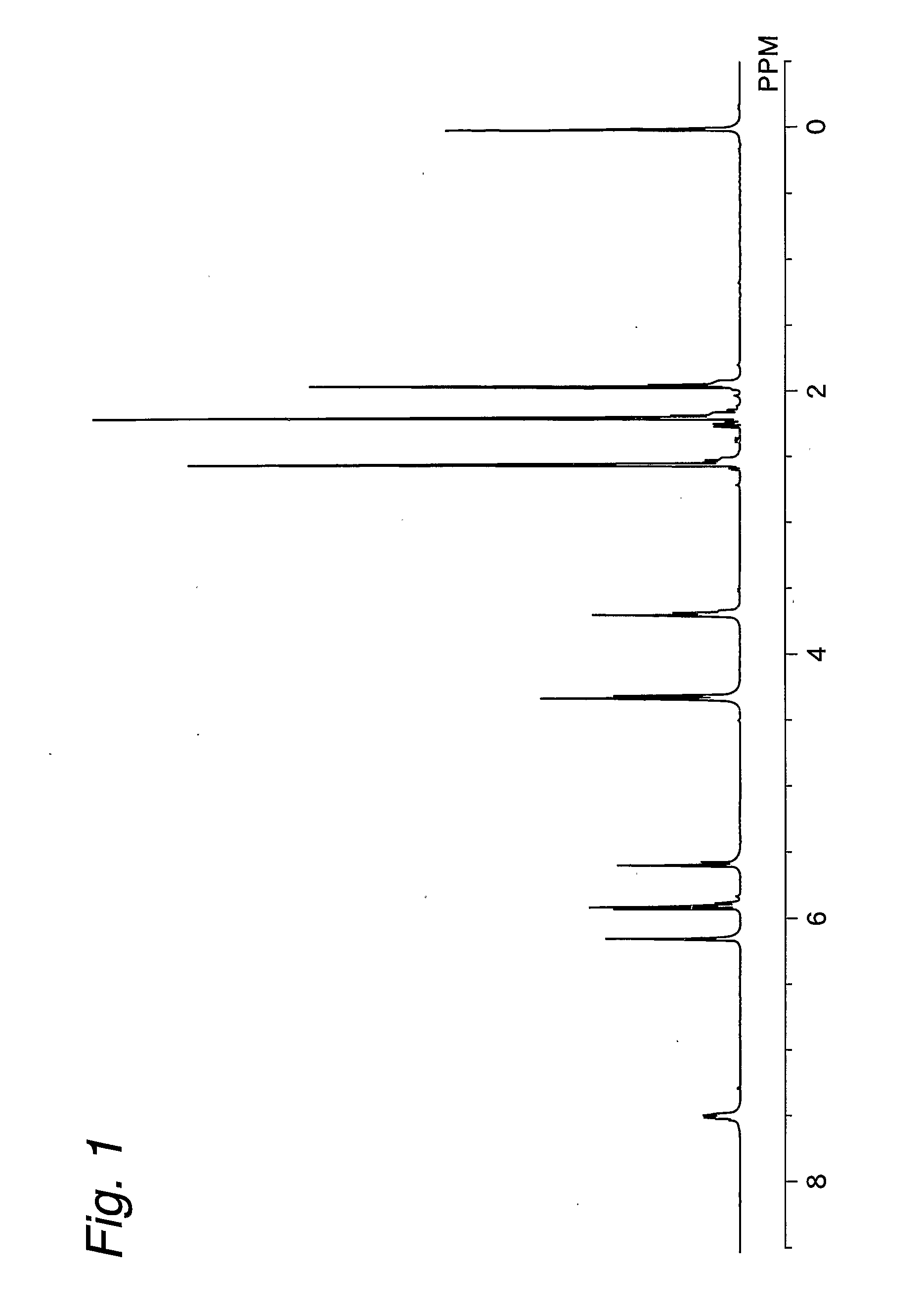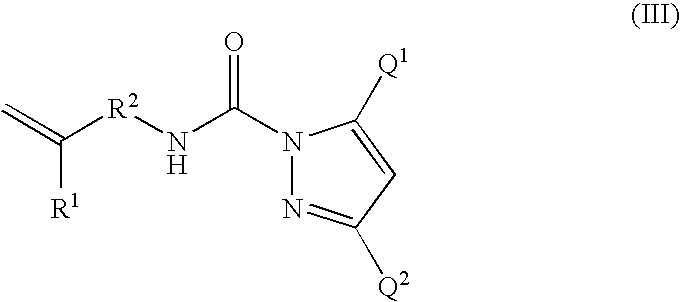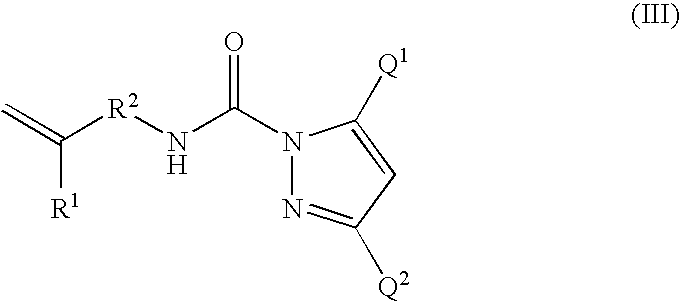Process for Producing Blocked Isocyanate Compound
- Summary
- Abstract
- Description
- Claims
- Application Information
AI Technical Summary
Benefits of technology
Problems solved by technology
Method used
Image
Examples
example 1
[0111] 3,5-Dimethylpyrazole (purity 99%, manufactured by Japan Hydrazine Company, Inc.; the same shall apply hereinafter) (19.81 g, 0.204 mol) and BHT (purity 99%, manufactured by Tokyo Kasei Kogyo Co., Ltd.; the same shall apply hereinafter) (0.2 g, 0.84 mmol) were charged into a 100-ml four-necked flask equipped with a stirrer, a thermometer, a dropping funnel, and a reflux condenser under a nitrogen atmosphere. The contents of the flask were cooled in a water bath of 15° C. with stirring. Next, 2-isocyanatoethyl methacrylate (Karenz MOI, manufactured by Showa Denko K.K.; the same shall apply hereinafter) (31.03 g, 0.2 mol) was added dropwise through the dropping funnel over a period of 90 min. Upon the dropwise addition, the internal temperature of the flask changed from 15° C. to 40° C. After the completion of the dropwise addition, stirring was continued at an internal temperature in the range of 30° C. to 40° C. for one hr while regulating the temperature in a water bath. A sm...
example 2
[0113] The blocked isocyanate compound (17.09 g, 0.068 mol) synthesized by the process described in Example 1, 3,5-dimethylpyrazole (19.81 g, 0.204 mol), and BHT (0.2 g, 0.84 mmol) were charged into a 100-ml four-necked flask equipped with a stirrer, a thermometer, a dropping funnel, and a reflux condenser, and the contents of the flask were stirred at room temperature for one hr. Next, 2-isocyanatoethyl methacrylate (31.03 g, 0.2 mol) was added dropwise through the dropping funnel over a period of 90 min. Upon the dropwise addition, the internal temperature of the flask changed from 25° C. to 40° C. After the completion of the dropwise addition, stirring was continued at an internal temperature in the range of 30° C. to 40° C. for one hr while regulating the temperature in a water bath. A small amount of a sample was obtained from within the reaction system, and an IR spectrum was measured. As a result, the level of absorption around 2270 cm−1 based on NCO group was below the detec...
example 3
[0114] The blocked isocyanate compound (17.09 g, 0.068 mol) synthesized by the process described in Example 1 and 2-isocyanatoethyl methacrylate (31.03 g 0.2 mol) were charged into a 100-ml flask, and the contents of the flask were stirred at room temperature for one hr to prepare solution A. 3,5-Dimethylpyrazole (19.81 g, 0.204 mol) and BHT (0.2 g, 0.84 mmol) were charged into a 100-ml four-necked flask equipped with a stirrer, a thermometer, a dropping funnel, and a reflux condenser, and solution A was added dropwise through the dropping funnel at room temperature with stirring over a period of 90 min. Upon the dropwise addition, a rise in internal temperature was observed. Specifically, the internal temperature of the flask changed from 25° C. to 40° C. After the completion of the dropwise addition, stirring was continued at an internal temperature in the range of 30° C. to 40° C. for one hr while regulating the temperature in a water bath. A small amount of a sample was obtained...
PUM
 Login to View More
Login to View More Abstract
Description
Claims
Application Information
 Login to View More
Login to View More - Generate Ideas
- Intellectual Property
- Life Sciences
- Materials
- Tech Scout
- Unparalleled Data Quality
- Higher Quality Content
- 60% Fewer Hallucinations
Browse by: Latest US Patents, China's latest patents, Technical Efficacy Thesaurus, Application Domain, Technology Topic, Popular Technical Reports.
© 2025 PatSnap. All rights reserved.Legal|Privacy policy|Modern Slavery Act Transparency Statement|Sitemap|About US| Contact US: help@patsnap.com



